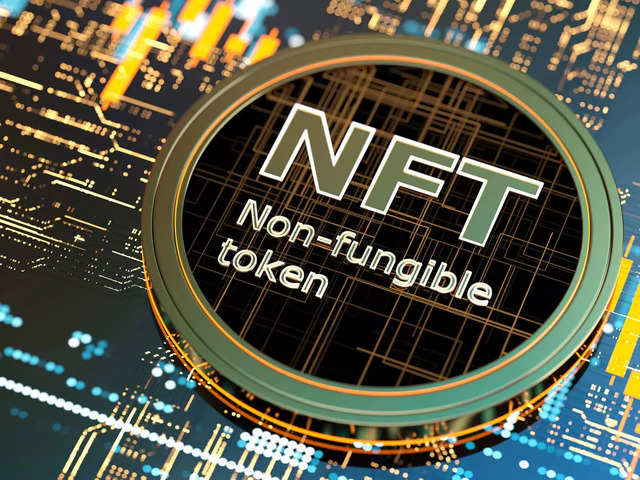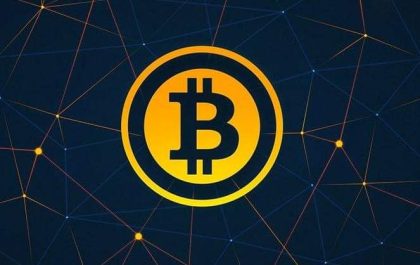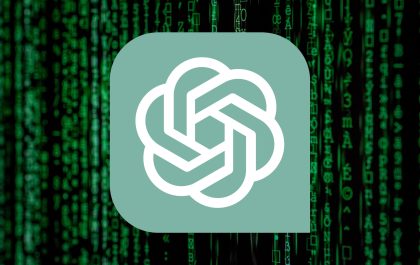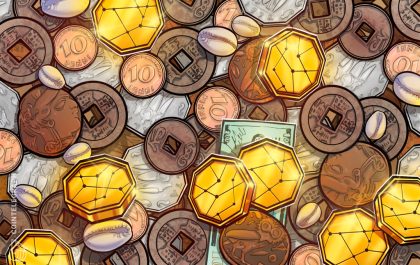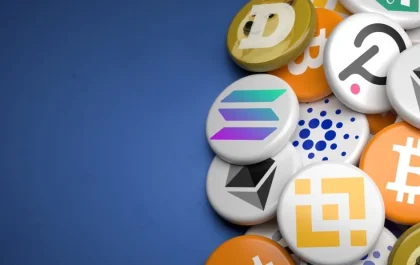– Ravikiran A S
Imagine buying a piece of digital artwork on the Internet at a reasonable price and getting a unique digital token known which proves your authority over the artwork you bought. Wouldn’t it be great? Well, that opportunity exists now, thanks to NFTs.
NFTs are currently taking the digital art and collectables world by storm. Just as everyone worldwide believed Bitcoin was the digital answer to currency, NFTs are now pitched as the digital answer to collectibles. Asa result, digital artists are seeing their lives changing thanks to the massive sales to a new crypto audience.

If you are interested in NFTs and want to explore more about what they are, you have come to the right place. Let’s dive in and see what all the fuss is about.
What is NFT?
NFT means non-fungible tokens (NFTs), which are generally created using the same type of programming used for cryptocurrencies. In simple terms these cryptographic assets are based on blockchain technology. They cannot be exchanged or traded equivalently like other cryptographic assets.
Like Bitcoin or Ethereum. The term NFT clearly represents it can neither be replaced nor interchanged because it has unique properties. Physical currency and cryptocurrency are fungible, which means that they can be traded or exchanged for one another.
Immerse yourself in the revolutionary world of NFTs while building a robust foundation in cybersecurity through our dedicated cyber security bootcamp. Discover the intricacies of non-fungible tokens and their impact on digital ownership, all while honing your skills in protecting these valuable assets from cyber threats. With hands-on training in encryption, blockchain security, and risk mitigation, you’ll be well-prepared to navigate the evolving landscape of NFTs with confidence. Join us to bridge the gap between cutting-edge technology and cybersecurity expertise in a single transformative program.
- NFT stands for a non-fungible token, which means it can neither be replaced nor interchanged because it has unique properties.
Key Features of NFT –
- Digital Asset – NFT is a digital asset that represents Internet collectibles like art, music, and games with an authentic certificate created by blockchain technology that underlies Cryptocurrency.
- Unique – It cannot be forged or otherwise manipulated.
- Exchange – NFT exchanges take place with cryptocurrencies such as Bitcoin on specialist sites.
Cryptopunks is a notable example of an NFT. It enables you to buy, sell and store 10,000 collectibles with proof-of-ownership.
History of Non-Fungible Tokens (NFTs)
As sometimes happens with innovative technology, NFTs did not just come out of the blue and become popular overnight. It leads to the question of when the first NFT came into existence.
According to some, Colored Coins, which was initiated in 2012, has the honor of being the first NFT. In the words of investor Andrew Steinworld, he said that one might argue that the Colored Coins were the NFT that first came into existence. Colored Coins exhibited a major leap in the capabilities of Bitcoin, however, they had a downside too. They could represent only some values if their worth is agreed upon by everyone. The scripting language of Bitcoin did not enable this type of behavior within the network it is in.
Some argue that “Quantum” NFT by Kevin McCoy minted on the Namecoin Blockchain on 2nd May 2014 is the first rightful owner of an NFT title. A project called “CryptoKitties” by Dapper Labs on Ethereum was the implementation of NFTs widely recognized as the first of its kind. When the 2017 crypto boom happened, those digital cats were priced at 600 Eth (or USD 172k) and mainstream attention was drawn globally. Since then, ample NFT projects have come up with a huge amount of success.
What is Blockchain?
Blockchain refers to a method of documenting data that ensures its security and integrity. This makes it impossible or difficult to modify, cheat or hack the system. A blockchain is essentially a digital documentation of transactions that is disseminated and replicated across a network or computer systems that uses blockchain technology
Blockchain and Fungibility
These are two concepts that can be related closely but also can pose some difficulties when combined. Fungibility pertains to a commodity or asset’s ability to be exchanged easily for another similar unit without any difference in quality or value. Blockchain technology, however, creates a transparent and immutable record of transactions and ownership.
For instance, if a certain cryptocurrency is involved in an unlawful activity, it may be told to be non-fungible or tainted, which means that it cannot be used interchangeably with other units of the same cryptocurrency. This leads to a loss of liquidity or value for the asset that is affected. However, a lot of solutions are currently being developed, like mixing privacy or services-focused cryptocurrency, to address this problem and to ensure fungibility while preserving the security and fungibility of blockchain technology.
How Does NFT Work?
Now that you’ve taken your initial steps in understanding what an NFT is, you should continue on and learn about how an NFT works.
- The majority of NFTs reside on the Ethereum cryptocurrency’s blockchain, a distributed public ledger that records transactions.
- NFTs are individual tokens with valuable information stored in them.
- Because they hold a value primarily set by the market and demand, they can be bought and sold just like other physical types of art.
- NFTs’ unique data makes it easy to verify and validate their ownership and the transfer of tokens between owners.
Examples of NFT
The NFT world is relatively new to people. Here are some examples of NFTs that exist today:
- A Digital Collectible
- Domain Names
- Games
- Essays
- Sneakers in fashion line
What is NFT Used For?
People interested in Crypto-trading and people who like to collect artwork often use NFTs. Other than that, it has some other uses too like:
- Digital Content – The most significant use of NFTs today is in digital content. Content creators see their profits enhanced by NFTs, as they power a creator economy where creators have the ownership of their content over to the platforms they use to publicize it.
- Gaming Items – NFTs have garnered considerable interest from game developers. NFTs can provide a lot of benefits to the players. Normally, in an online game, you can buy items for your character, but that’s as far as it goes. With NFTs, you can recoup your money by selling the items once you’re finished with them.
- Investment and Collaterals – Both NFT and DeFi (Decentralized Finance) share the same infrastructure. DeFi applications let you borrow money by using collateral. NFT and DeFi both work together to explore using NFTs as collateral instead.
- Domain Names – NFTs provide your domain with an easier-to-remember name. This works like a website domain name, making its IP address more memorable and valuable, usually based on length and relevance
NFTs vs. Crypto and Fiat currencies. What’s the Difference?
NFTs or Non-Fungible Tokens are a kind of cryptocurrency that represents a one-of-a-kind digital asset or unique piece of artwork. Fiat and cryptocurrencies are mainly used for transactional purposes and are fungible, which means each unit can be interchanged. Being created on blockchain technology, NFTs allow the transfer of ownership and transparent ownership. They allow artists to monetize their creations made digitally and thus have gained huge popularity. Crypto and fiat currencies, on the other hand, are used mainly as a store of value or medium of exchange. While there are certain similarities, the unique features of NFTs make them different from traditional currencies.
What is an NFT Marketplace?
It is a marketplace that is a public Blockchain platform. Though it is in its early stages, this marketplace is gaining popularity and inspiring businesses and developers to construct a marketplace.
Benefits of Non-Fungible Tokens
There are several advantages of NFTs, some of these include:
- NFTs can be invested in by anyone as it is accessible to all and sundry. An NFT can be more efficiently and easily transferred among people around the globe.
- A blockchain secures NFT ownership. The digital signature of ownership can make the ownership of an investor quite secure. The ownership also gets transparent due to the blockchain technology.
- NFTs provide the scope for learning more about blockchain technology. The investors can do so while making their portfolios diverse and allocating a small amount of tokenized assets.
Why Are NFTs Becoming Popular?
NFTs have actually been around since 2015, but they are now experiencing a boost in popularity thanks to several factors. First, and perhaps most obviously, is the normalization and excitement of cryptocurrencies and the underlying blockchain frameworks. Beyond the technology itself is the combination of fandom, the economics of royalties, and the laws of scarcity. Consumers all want to get in on the opportunity to own unique digital content and potentially hold them as a type of investment.
When someone buys a non-fungible token, they gain ownership of the content, but it can still make its way over the Internet. In this way, an NFT can gain popularity — the more it’s seen online, the more value it develops. When the asset is sold, the original creator gets a 10 percent cut, with the platform getting a small percentage and the current owner getting the rest of that revenue. Thus, there is potential for ongoing revenue from popular digital assets as they are bought and sold over time.
Authenticity is the name of the game with NFTs. Digital collectibles contain distinguishing information that make them distinct from any other NFT and easily verifiable, thanks to the blockchain. Creating and circulating fake collectibles doesn’t work because each item can be traced back to the original creator or issuer. And, unlike cryptocurrencies, they can’t be directly exchanged with one another (like baseball cards in real life) because no two are the same.
Are NFTs Mainstream Now?
So, with all the fuss made over NFTs, is it accurate to say that they’re now mainstream? This article makes a strong case for believing that NFTs are now baked into the public consciousness. It doesn’t hurt that a number of high-profile celebrities have ventured into NFT waters.
While perhaps it may be premature to say “Yes, NFTs are definitely mainstream now,” if they continue on this trajectory, 2022 could be the year where we know that NFTs are here to stay.
Related posts
Brit Awards | Asake, Burna Boy And Other ‘New Cats’ Get Nominations
Nigerian singers Burna Boy, Asake, and Rema have been nominated for the 2024 Brit Awards. The nomination list for the annual music awards show was released on Wednesday 25, January 2024. Burna Boy and Asake made the ‘Best International Artiste’ category, while ‘Calm…
Brit Awards 2024 | The Full List Of Artist(e)s
This year’s Brits nominees have been revealed ahead of the ceremony in London in March. Dua Lipa is the first star confirmed to perform at the event – but how many awards is she up for? Musicians including Raye, Central Cee, J Hus and Blur are also…
The Miss Universe-Greatest Celebration of Women
-SOFIE ZERUTO The Miss Universe Organization is a global, inclusive of organizations that celebrates all cultures, backgrounds and religions. It creates and provide a safe space for women to share their stories and drive impact personally, professionally, and philanthropically. The women who participate in this…
All Africa Music Awards; Categories and Regions
-MUSIC IN AFRICA All Africa Music Awards (also referred to as AFRIMA) is an annual awards event. The awards event was established by the International Committee AFRIMA, in collaboration with the African Union (AU) to reward and celebrate musical works, talents and creativity around the African continent while promoting…
Top 10 Cryptocurrencies To Invest in January 2024
-Michael Adams From Bitcoin and Ethereum to Dogecoin and Tether, there are thousands of different cryptocurrencies, making it overwhelming when you’re first getting started in the world of crypto. To help you get your bearings, these are the top 10 cryptocurrencies based on their market…
The Risk And Reward Of ChatGPT In Cybersecurity
Juan is an experienced CTO with a demonstrated history of working in the computer and network security industry. He is an information technology professional skilled in SAP and Oracle applications, computer forensics, vulnerabilities research, IPS/IDS and information security. Unless you’ve been on a retreat in…
Explained – History Of Money From Fiat To Crypto
What is money? Money as a concept has been a cornerstone of human civilization and economic development. To start with the latter, money is a method of storing value and worth, and it also functions as a medium of exchange that allows individuals to exchange…
Studies Show That Nigerian Crypto Foreign Investment Is At A Record Low
Foreign direct investment in Nigeria fell by 33% last year due to a severe shortage of dollars, which discouraged crypto companies from expanding into the country. The largest economy in Africa has a foreign investment problem despite exponential growth in crypto adoption. The National Bureau…


